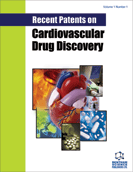Abstract
Calcineurin (Cn), a serine/threonine phosphatase, plays a crucial role in the development of myocardial hypertrophy. Cn is a cytosolic phosphatase which dephosphorylates various target molecules, e.g. the transcriptional factor nuclear factor of activated T cells (NFAT), thereby enabling its nuclear translocation. Recently, it was demonstrated that not only NFAT, but also Cn is translocated into the nucleus. The nuclear coexistence of Cn and NFAT is important for the full transcriptional activity of the Cn-NFAT signalling cascade. Once Cn and NFAT have entered the nucleus of cardiomyocytes, the transcription of genes characteristic for myocardial hypertrophy (e.g. BNP, ANP) is initiated. The nuclear localization sequence (NLS), a region spanning amino acids 172-183 of calcineurin Aβ (CnAβ) is essential for recognition and shuttling of Cn into the nucleus by importinβ1. A synthetic import blocking peptide (IBP) that mimics the NLS of Cn was tested recently. The NLS analogon IBP saturates the Cn binding site of importinβ1 thereby preventing binding of Cn and importin. This inhibits the translocation of Cn into the nucleus. Inhibiting the Cn/importin interaction with competing synthetic peptides is one of several new approaches to prevent the development of myocardial hypertrophy. Several patents have also been filed on molecules related to inhibition of Cn-NFAT signalling.
Keywords: Hypertrophy, NFAT, calcineurin, &, nuclear import
 4
4


